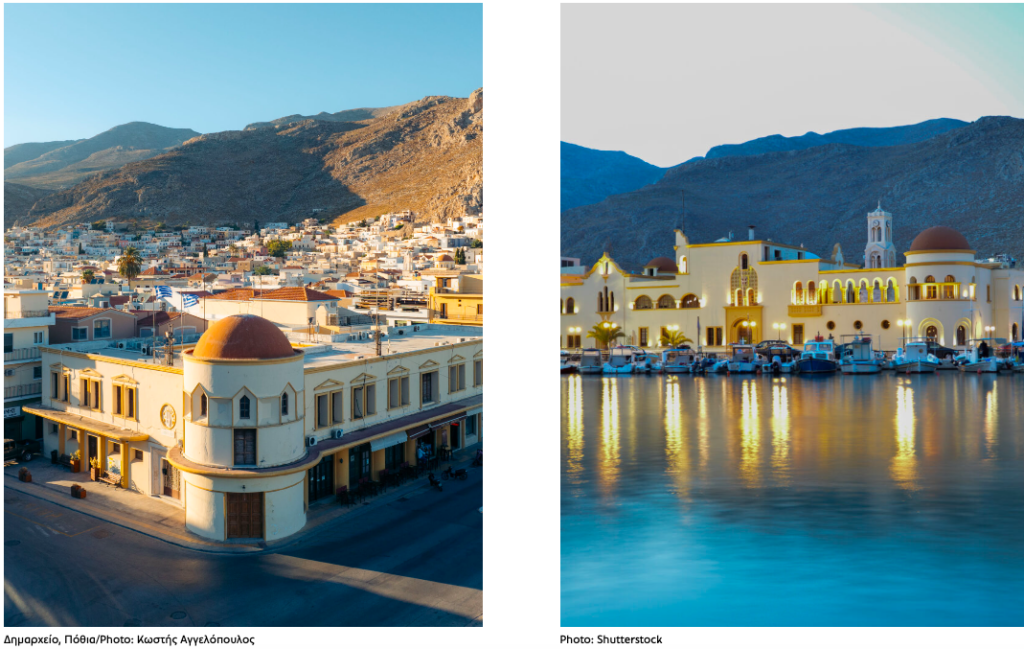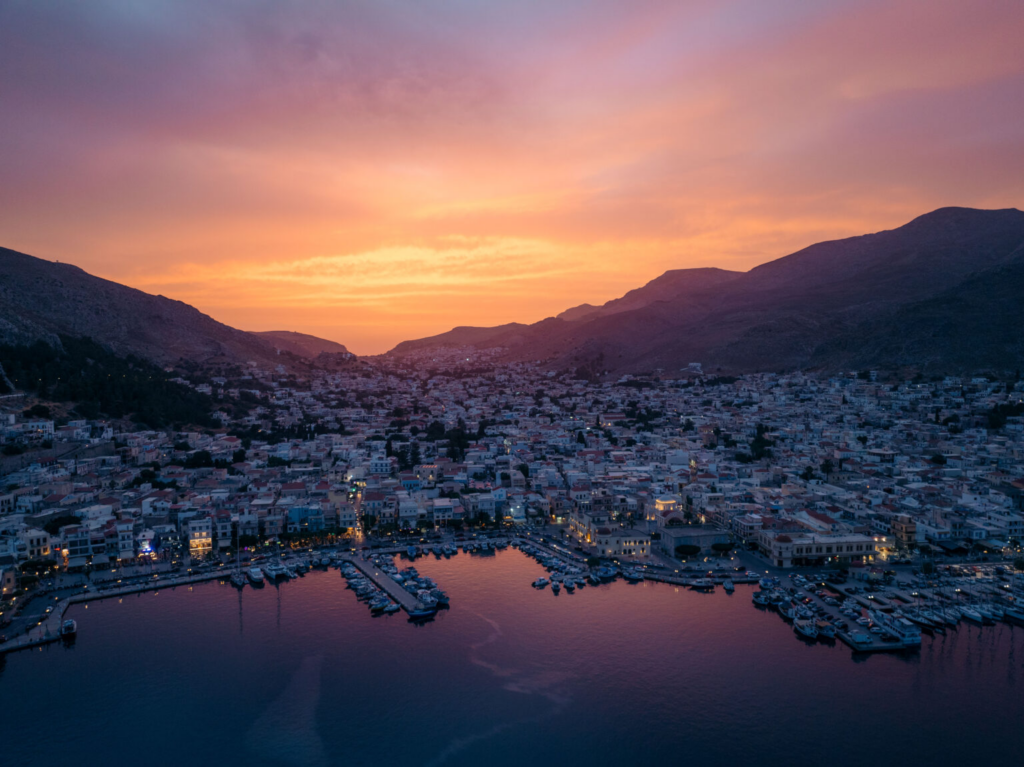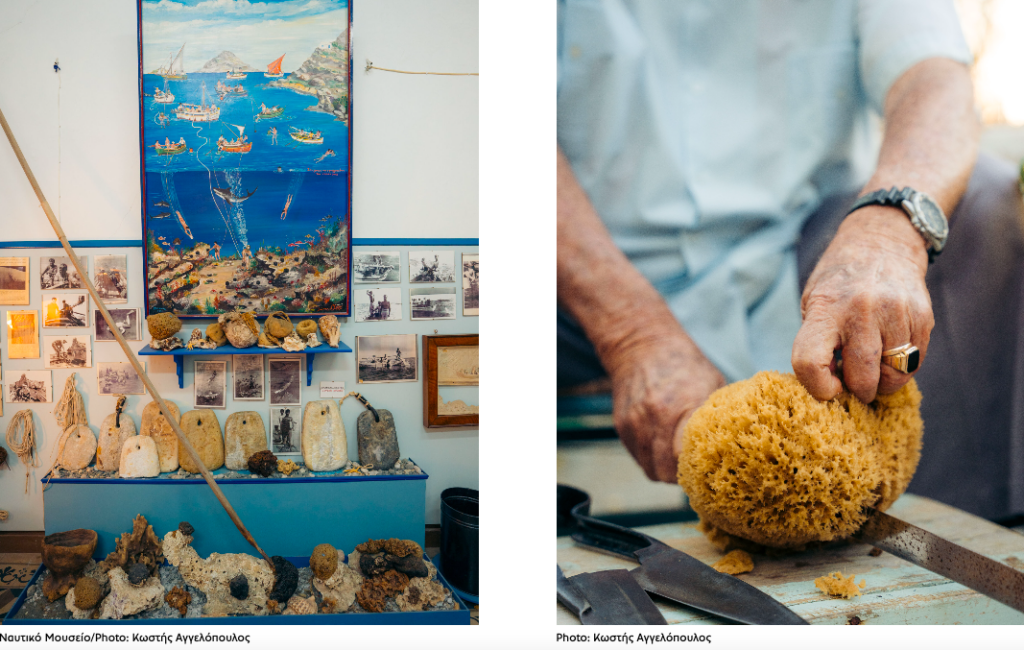Kalymnos, the island of sponge divers, is a destination that uniquely combines rich history with modern life. It offers visitors authentic experiences, stunning landscapes, traditional flavors, and thrilling activities.
For nature and adventure lovers, Kalymnos is a paradise on earth. Its climbing areas attract visitors from all over the world, providing unique experiences and challenges for all skill levels. Additionally, diving is also a popular activity, with diving centers organizing excursions to shipwrecks, reefs, and underwater caves, revealing the secrets of the sea.
The beaches of Kalymnos, with their crystal-clear waters and golden sands, offer moments of relaxation and tranquility. From deserted and secluded spots to well-organized ones, visitors can enjoy the sun and sea, while hikers will discover enchanting trails leading to hidden coves and historical monuments, such as the impressive Castle of Chrysocheria.
Life on Kalymnos flows at a gentle island pace. In Pothia, the island’s capital and port, locals enjoy their coffee or ouzo at quaint cafés and taverns while visitors wander through picturesque alleyways, admiring the traditional houses and neoclassical buildings. The history of Kalymnos unfolds before their eyes, with museums like the Maritime Museum and the Kalymnian House narrating the fascinating stories of sponge divers and sailors who shaped the character of the island.
The gastronomy of Kalymnos is a unique experience. Visitors can savor traditional delicacies, such as the famous katsikaki mouri, which is slow-cooked until tender and juicy, or fresh seafood like octopus and lobster. Local cheeses perfectly accompany ouzo or wine, while sweets like traditional loukoumades and airy, delicate galaktoboureko satisfy even the most discerning palates.
Kalymnos is a destination that offers authentic experiences, blending the beauty of the landscape with a rich cultural heritage. An island that invites visitors to discover its secrets, taste traditional flavors, and live moments of adventure and relaxation in an authentic island environment. The hospitality of the locals, unique activities, and enchanting nature make Kalymnos a destination worth visiting for an unforgettable holiday experience.
Photo: Kostis Angelopoulos, Town Hall, Pothia
Photo: Shutterstock
The Architectural Heritage of Kalymnos: The Italian Buildings Adorning Pothia
Kalymnos is known not only for its natural beauty and rich maritime history but also for the impressive Italian buildings that adorn its capital, Pothia. Among them stand out the Prefectural Building and the Town Hall, two architectural masterpieces that reflect the influence of Italian Occupation on the island in the early 20th century.

The Prefectural Building, which now houses administrative services, is an imposing two-story structure with strong neoclassical elements. The symmetrical lines, large windows, and intricate decorative patterns on the façade create a sense of harmony and elegance. Built in 1934, it serves as an excellent example of Italian architecture of the time and adds a touch of aristocratic charm to the center of Pothia.
Next to the Prefectural Building, the Kalymnos Town Hall stands out with its impressive façade and rich décor. Completed in 1938, the building combines elements of neoclassicism and baroque, emphasizing symmetry and grandeur. The columns, arched windows, and ornate sculptures adorning the façade evoke a sense of luxury befitting a public building of such significance.
These two buildings are not only beautiful examples of architecture but also symbols of Kalymnos’s history and identity. The Italian Occupation, despite the challenges it brought, left its mark on the island, influencing not just its architecture but also its culture and daily life.

Today, the Prefectural Building and Town Hall proudly stand in the heart of Pothia, surrounded by picturesque neighborhoods with traditional houses and narrow streets. Visitors walking along the promenade and admiring these buildings can appreciate the harmonious coexistence of local tradition and foreign influences, a blend that has shaped the unique character of Kalymnos.

The Italian buildings of Pothia are not merely beautiful sights; they are living pieces of the island’s history. They stand as reminders of the adventures and changes Kalymnos has experienced over the years and symbolize the resilience and adaptability of its people. A visit to Pothia is not just an aesthetic delight; it is also a journey through time and the multicultural heritage of Kalymnos.
Photo: Kostis Angelopoulos, Kalymnian House
A Journey Through Time: The Kalymnian House Brings History to Life
At the heart of Kalymnos lies a hidden treasure that reveals the life and culture of past centuries. The Kalymnian House offers visitors a unique opportunity to travel back in time and experience the daily life of Kalymnians in the 19th and early 20th centuries. Walking from room to room, you can admire the authentic furniture and items that adorn the spaces. From the bride’s bedroom with its intricate embroideries and white linens to the traditional kitchen with its copper utensils and warm atmosphere, each corner of the house has its own story to tell.

Particularly striking is the story of the lives of Kalymnian women who stayed behind when their men left for months on sponge-diving missions. The farewell of husbands and sons with white handkerchiefs, only to wear black mourning clothes until their return, tells a poignant tale. The Kalymnian House is not just a museum but a living space that highlights Kalymnos’s rich cultural heritage. Visitors have the chance to firsthand experience the traditions and values that shaped the character of the Kalymnians while gaining a deeper understanding of the island’s history.
Photo: Kostis Angelopoulos, Maritime Museum
The History of Sponge Diving: The Kalymnos Maritime Museum
In the heart of Pothia, Kalymnos, a small treasure awaits discovery by lovers of maritime history and tradition. The Maritime Museum, founded in 1994 and housed in the former Vouvallio Nautical School, serves as a living monument to the achievements of Kalymnians at sea, with a special emphasis on the art of sponge diving. Walking through the museum’s halls, visitors have the chance to admire a rich collection of maritime artifacts, such as anchors, amphorae, and shells, along with an impressive variety of sponges from various regions and categories. Among the exhibits are tools and devices used in the sponge diving journey, from the primitive stones used by free divers to the “modern” diving suits.

The history of sponge diving comes to life through photographs and documents accompanying the exhibits, revealing the hardships, dangers, and heroism of Kalymnian divers. Visitors can also see up close the tools and devices used in the processing of sponges, gaining a comprehensive picture of the process from harvesting to final use. The Maritime Museum does not limit itself to sponge diving; it also hosts exhibits related to the island’s shipbuilding industry and models of various types of vessels. The collection is complemented by relevant literature, articles, and works aimed at documenting and promoting Kalymnos’s maritime heritage. Despite limited resources and challenges, the Kalymnos Maritime Museum remains a beacon of preservation and safeguarding of the island’s history. The unwavering support of the locals, who generously donate objects and memorabilia, underscores the deep connection of Kalymnians to the sea and sponge diving.
Ask me anything
Explore related questions





